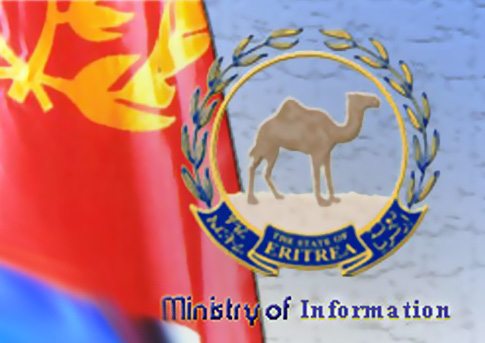The Famine in Somalia is expected to worsen further, according to a document released on July 19 by the FEWS-NET (The Famine Early Warning Systems Network) and FSNAU (Food Security and Nutrition Analysis Unit), in collaboration with FAO, UNICEF and several other international agencies.
collaboration with FAO, UNICEF and several other international agencies.
It is to be recalled that the United Nations(UN) declared a famine in two regions of southern Somalia on Wednesday.
However, the document, titled ‘Famine in Somalia: Evidence for Declaration, July 19/2011’ claims that
‘assuming current levels of response, evidence suggests that famine across all regions of the south will occur in the coming 1-2 months.‘
On the other hand, according to the maps in the document the situation in Ethiopia and Kenya are to remain the same until September, when it starts to improve. The document notes, ‘the current food security crisis is regional, and lifesaving assistance is also needed in Kenya and Ethiopia. However, famine and risk of famine are only present in southern Somalia.’
Here are excerpts from the document.
Current situation – July 2011
Number of people in crisis nationwide: 3.7 million, compared to 2.85 million in June 2011.
Number in need of lifesaving assistance nationwide (Humanitarian Emergency and Famine): 3.2 million
Number in need of lifesaving assistance in southern Somalia (Humanitarian Emergency and Famine): 2.8 million compared to 1.75 million in June 2011.
Current food security classification map – July 2011
Most likely scenario (July – December 2011)
- July Gu-season harvests expected to be 50 percent of the 1995-2010 average, at best.
- Major cereal harvests in the east Africa region are currently forecasted to be near-normal, though trade restrictions exist.
- Continued increase in local cereal prices, but the imported rice price will act as a ceiling.
- Below-normal Pasture availability
- Rapid pasture depletion
- Average October to December rainfall forecast
- Below-normal Pasture availability
Implications of Oct-Dec rainfall for crop and livestock production and health
Even if rains are normal…..
- Given the increased vulnerability of populations, especially the displaced, the onset of rains is likely to result in an increased risk of morbidity and mortality. Malaria is of particular concern.
- Livestock births and milk availability are likely to be very low given significantly below normal livestock conceptions during the past two seasons.
- Large scale displacement may impact deyr season crop cultivation.
Projected food security outcomes (August – December 2011)
Implications for response
- Large scale, immediate, comprehensive humanitarian response is required in the south. . These assistance needs will persist through at least December 2011.
- Food access response should be coordinated with market traders and importers
- Provide agricultural inputs and livestock support services to maximize upcoming rains and increase productivity.
- Consider interventions which help to prevent large scale movement and concentration of people as they will reduce short-term negative impacts on health and longer term impacts on livelihoods.
- Ongoing response in Central and Northern Regions remains critical, especially given deteriorating levels of malnutrition among IDPs.
Additional considerations
Conditions are fluid, but current humanitarian access remains very limited across southern Somalia. Negotiations for improved humanitarian access should continue, as should access monitoring and reporting.
While household purchasing power is limited, price monitoring, import data, and cross border trade data suggest that markets are functioning. Despite current trade restrictions traders are able to supply markets with imported staple foods (rice, pasta, wheat flour).
Worst-case Scenario (July-December 2011)
- Widespread disease outbreaks such as measles, cholera/AWD, and others Livestock disease outbreaks
- Deyr rains less than average causing poor crop production and worsening pasture conditions
- A disruption to the flow of imported cereals price/availability impacts.
- Conflict increases causing trade disruptions, looting, or population displacement
- Worsening humanitarian access
Implications: increasing severity, increasing numbers, increased displacement, and extension of the crisis further into 2012 with current or higher levels of severity.
Key Messages
1. Evidence indicates that famine currently exists in Bakool agropastoral and Lower Shabelle and that a humanitarian emergency exists across the rest of the south.
2. This crisis represents the most serious food insecurity situation in the world today, in terms of both scale and severity. Current humanitarian response is inadequate to meet emergency needs. Assuming current levels of response, evidence suggests that famine across all regions of the south will occur in the coming 1-2 months.
3. A massive multisectoral response is critical to prevent additional deaths and total livelihood/social collapse. Most immediately, interventions to improve food access and to address health/nutrition issues are needed. In the medium term, interventions to rebuild and support livelihoods are critical. Extraordinary measures to provide this response should be implemented.
4. Tens of thousands of lives can be saved, but the window of opportunity to do so is extremely limited. These assistance needs will persist through at least December 2011.
***********
You may download the report ‘Famine in Somalia: Evidence for Declaration, July 19/2011’ – here.
See the forecast maps on East African food security situation – here.
Check the Hunger Archive for related posts.








5 Reactions on this Article
Comments are closed.
Leave a Comment